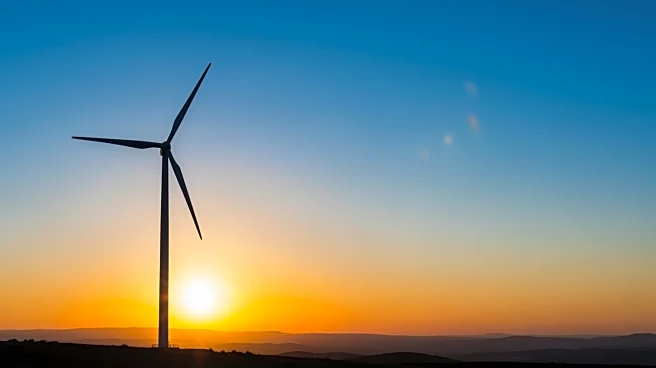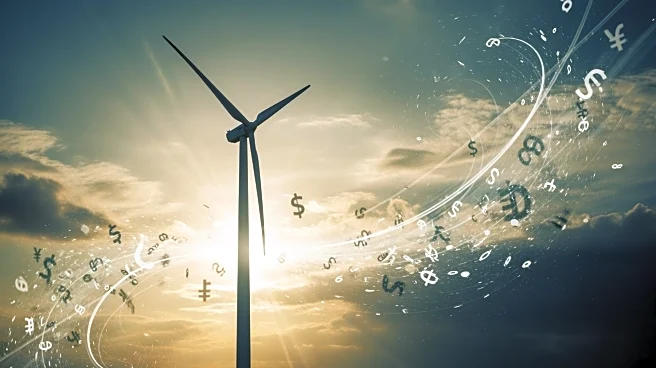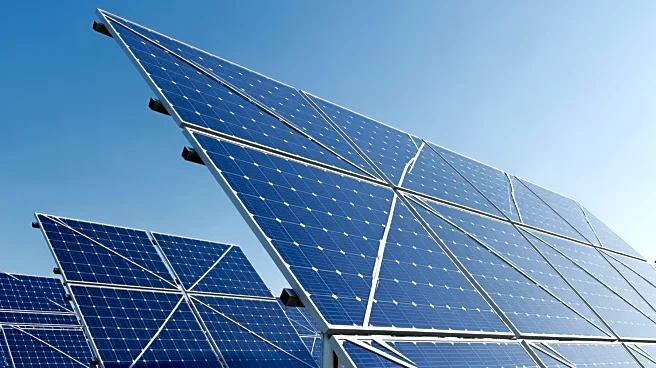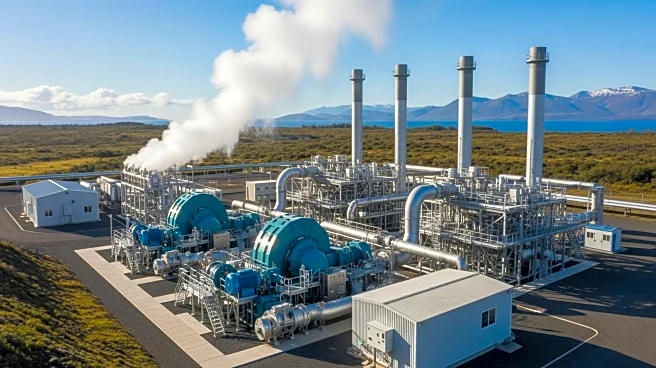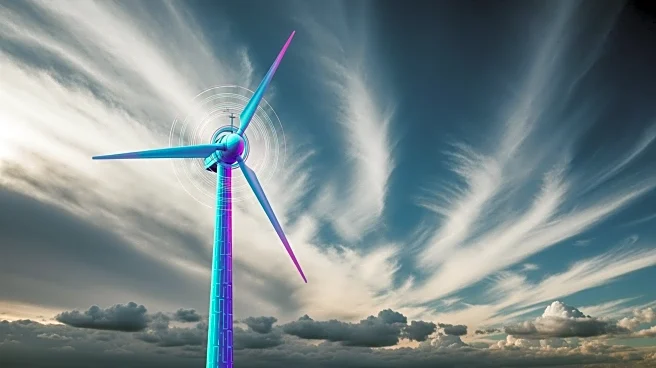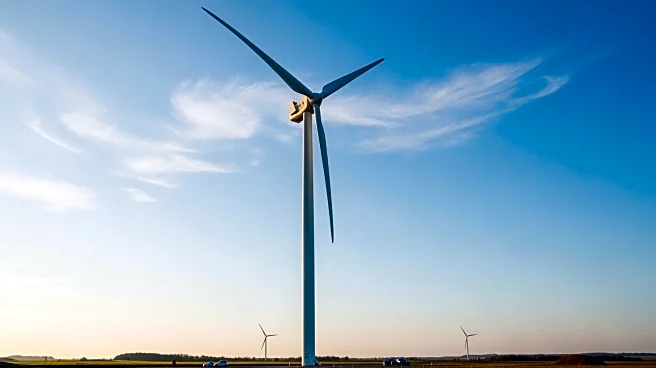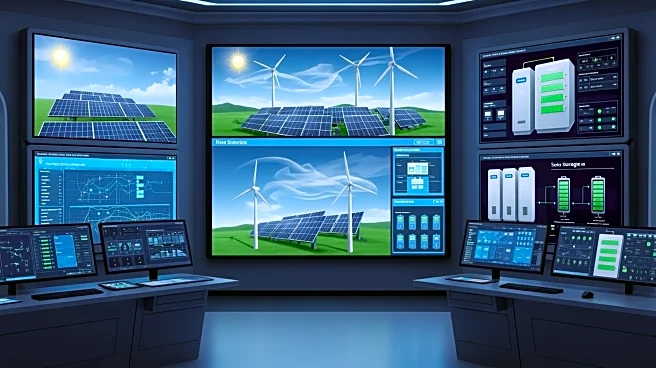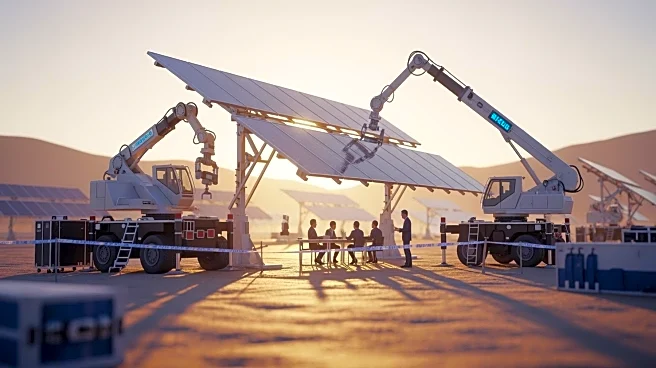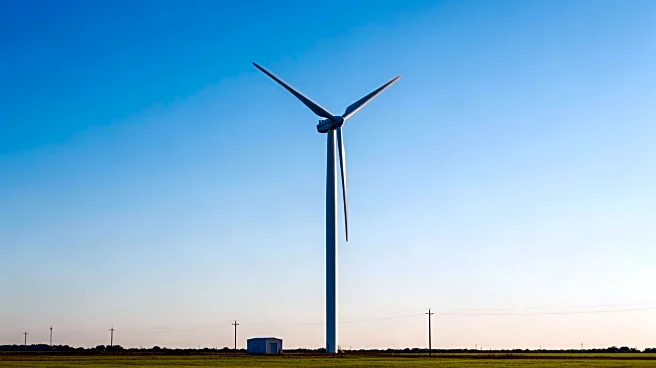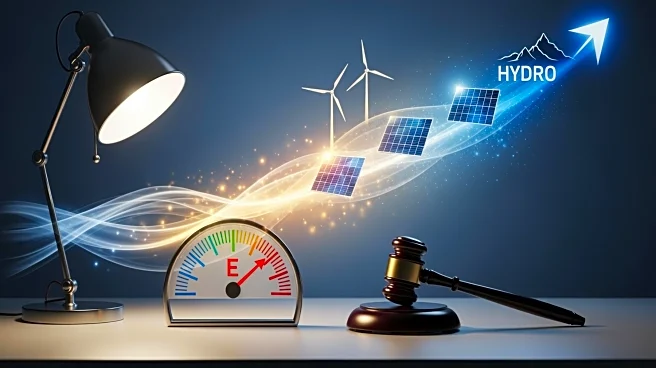What's Happening?
Wind power purchase agreement (PPA) prices in North America have risen significantly under the Trump administration, with a reported increase of nearly 14% since last year. According to LevelTen Energy,
tariffs and permitting challenges are major contributors to this rise, while the energy transition firm Trio points to increased financing costs. The Trump administration's additional tariffs could further elevate PPA costs by 10% to 15%, as noted by Joey Lange, senior managing director for clean energy supply at Trio. The demand for clean energy, particularly wind, has surged as corporate procurement teams aim to meet 24-7 clean energy goals. However, restrictive federal permitting policies and the rush to meet federal tax incentives under the One Big Beautiful Bill Act have led to a reduction in available clean energy projects.
Why It's Important?
The rising costs of wind PPAs have significant implications for the U.S. clean energy sector. As tariffs and financing costs increase, the economic feasibility of new wind projects is challenged, potentially slowing the transition to renewable energy. This could impact corporate strategies aimed at achieving sustainability targets and affect the broader energy market by increasing electricity prices. The situation underscores the complex interplay between government policies and market dynamics, highlighting the need for strategic planning by energy developers and buyers. The potential for further tariff-induced cost increases adds uncertainty, which could deter investment and delay project timelines, affecting the U.S. commitment to reducing carbon emissions.
What's Next?
As the supply of tax credit-qualified projects is expected to dwindle, stakeholders are closely monitoring the impact of the One Big Beautiful Bill Act and tariff policies. Developers and corporate buyers may need to adjust their strategies to navigate the evolving landscape. The industry is likely to see continued pressure on PPA prices, with the possibility of either gradual increases or sudden spikes. Stakeholders will need to assess the long-term viability of projects and consider alternative financing and procurement strategies to mitigate risks associated with rising costs and regulatory changes.
Beyond the Headlines
The current situation highlights broader challenges in balancing economic growth with environmental sustainability. The interplay between tariffs, financing costs, and regulatory policies reflects the complexities of transitioning to a clean energy economy. This scenario may prompt discussions on the need for policy reforms that support renewable energy development while addressing economic concerns. The evolving landscape could also influence public opinion and political discourse on energy policy, potentially shaping future legislative priorities.
